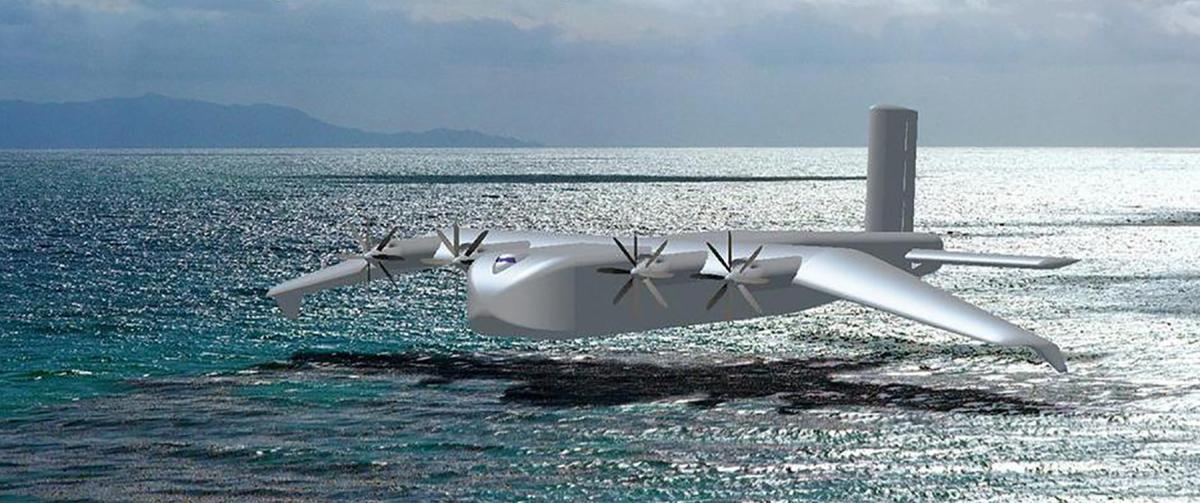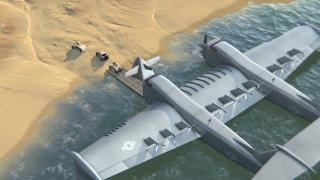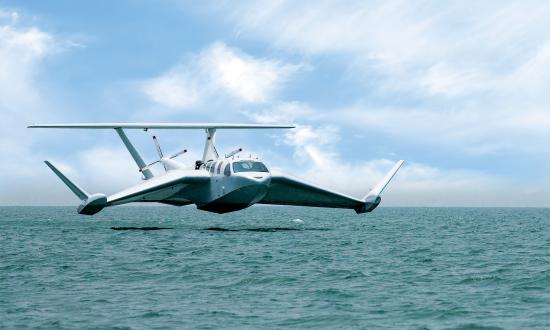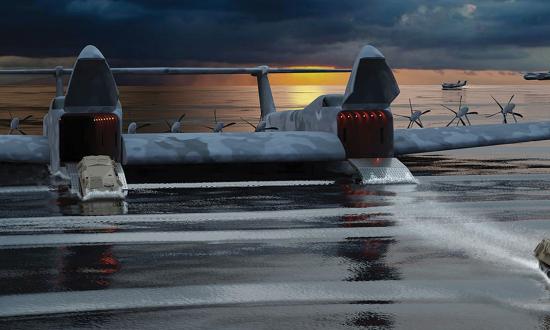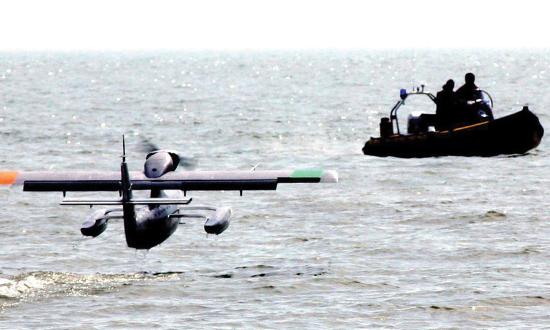In a September 2021 YouTube video, two hobbyists fly a remote-controlled ground effect vehicle (GEV), or Ekranoplan, that they built using a design from The Flying Ship Company, in Leesburg, Virginia. In simple terms, ground effect occurs when an aircraft flies less than a wingspan from the ground, where lift is increased because of a “ram” effect and drag is decreased because of weaker wingtip vortices. It took off from and landed on the surface of the water and proved capable even in rough conditions. This category of vehicle—not quite a boat and not quite an airplane, yet offering advantages of each—deserves closer consideration as a future vehicle design for the joint force.
The Soviet Union fielded a massive GEV in 1987, called the Lun-class Ekranoplan, designed to haul a whopping cargo weighing 220,000 to 300,000 pounds. The vehicle flew at airplane speeds just above the surface of the ocean, out of reach of sea mines and torpedoes and evading radars focused high in the sky. Early Ekranoplan prototypes led Soviet Premier Nikita Khrushchev to boast that the Soviet Union had boats that could “jump over bridges.” An earlier version, called the Orlyonok, could carry 140 soldiers or two fully loaded armored personnel carrier vehicles. The Lun-class featured six rocket launchers along its dorsal edge and greater load capacity. Its operational range was 1,000 nautical miles, and it flew at 16 feet above the surface at 240 knots. Only one of the Lun-class ever made it to the Soviet fleet before the Soviet Union collapsed.
Ekranoplan capabilities have the potential to be enormous, especially considering their use in a widely dispersed theater such as the Indo-Pacific. U.S. Ekranoplans would fit quite nicely into the Marine Corps’ expeditionary advanced base operations (EABO) concept as well as both blue-water and littoral Navy operations. Not only would Ekranoplans be an option for future Marine ship-to-shore connector vehicles, but they also have the potential to cut out the need for vulnerable transport ships; an Ekranoplan with a 1,000 nm range could serve as an island-to-island connector. It would travel from beachside to beachside with the ability to take off and land from the surface of the water, dramatically expanding the Marine Corps’ lines of communication in EABO. Such a capability would reduce Marine Corps reliance on the Navy, while at the same time increasing its ability to support it. EAB sustainment will be critical for the capacity of Marine littoral regiments to offer support for the fight at sea.
Ekranoplans have potential in a variety of roles currently played by surface ships, including variants that could be small, unmanned, and loaded with sensors. These might be solar powered, loitering in designated areas until needed. Larger unmanned ones might feature hypersonic missiles and directed-energy weapons. A fleet of ground-effect drones could enable the Navy to connect sensor to shooter across wide swaths of the Indo-Pacific, reducing demand for large, slow, vulnerable ships. They could also be trans-media, submerging to avoid weather or airborne threats. Small trans-media Ekranoplan attack drones would add a stealth factor and complicate the adversary’s targeting solution. Medium-size cargo variants could serve as ship-to-shore connectors or ship-to-ship connectors with folding wings to fit inside well decks, speeding up replenishment at sea, among other missions. Larger attack variants might possess the offensive abilities of a conventional frigate or destroyer while traveling at airplane speeds.
In 2002, Boeing unveiled a GEV design called the Pelican, which would have been the largest plane ever built. The design claimed a cargo capacity of 1,400 tons—ten times that of the C-5A Galaxy—and could be flown at 20,000 feet over land, but just 20 feet over water to capture ground effect. The Pelican design proposed four propellers rather than turbofan engines. The Pelicans would have the capacity to transport Marine units from Southern California to austere western Pacific locations overnight, for example, without having to rely on vulnerable strategic airlift assets or known airport debarkation locations. If small modular nuclear reactors someday move from research and development into commercially viable products, they could potentially power Ekranoplans, giving them effectively unlimited range. There are many obstacles to overcome, from regulatory approval to risks associated with aircraft crashing, but the potential benefits would be significant.
The Ekranoplan concept offers the United States a solution to several problems involved in contested zones covered by antiaccess/area-denial systems, from cargo loads normally associated with relatively slow ships to maneuver below antiair radar systems yet above sea mines and torpedoes, all at aircraft speeds, complicating the adversary’s targeting solution. It dramatically reduces the tyranny of distance and takes off and lands on the water, eliminating the requirement for fixed, targetable airstrips, while allowing Marines to depend less on the Navy for transport yet enhancing their ability to assist the Navy in multiple domains. Finally, Ekranoplans could enhance the kill chain with drone Ekranoplans operating at scale with artificial intelligence to sense, communicate, and shoot.
The United States is fortunate that the Soviets never fielded a fleet of Ekranoplans and luckier still that its current adversaries have not yet fielded newer GEVs at scale. But China is testing a GEV called the XTW. Mastering the GEV design will dramatically improve China’s long-range amphibious capabilities, allowing the People’s Liberation Army to rapidly move equipment and personnel in the first island chain.
The joint force should start cautiously, with small, cheap drones being used as sensors. These would offer an excellent opportunity to experiment with trans-media technology, engineering them to submerge and loiter underwater. In the medium term, the Navy–Marine Corps team should evaluate Ekranoplans as ship-to-shore connectors. Such vehicles would allow dramatically improved standoff distances for ships supporting amphibious assaults. In the long term, the services should evaluate large designs, such as DARPA’s proposed Liberty Lifter, for strategic airlift and sealift operations. The Ekranoplan is not a new concept, but it deserves renewed interest and recognition as a solution to important issues facing the joint force.



